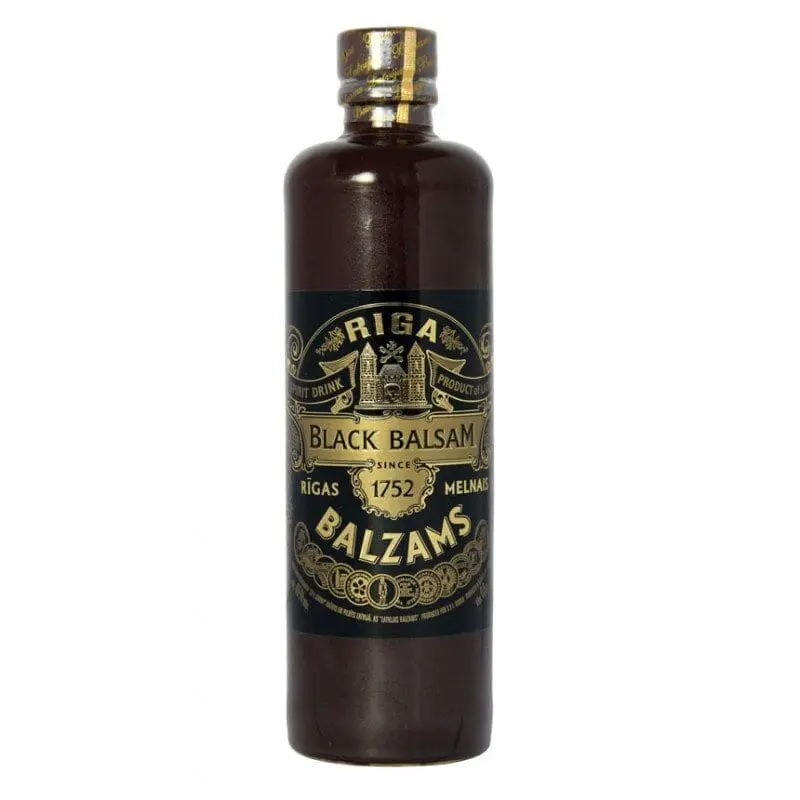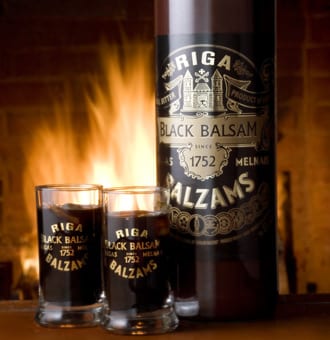Contents
Description
Balsam (gr. balsamon – “therapeutic agent”) is an alcoholic drink with a strength of about 40-45. (sometimes 65), infused with medicinal herbs. It is used exclusively for therapeutic and prophylactic purposes. Traditionally, the balsam has a brown color due to various herbs, roots, and fruits.
Balsam as a medicinal tincture appeared in the mid-18th century.
Technology for the production of balsams is highly complex and involves quite a few long stages.
Stage 1: Separate infusion of each ingredient on alcohol for 1-3 months. The balm can include more than forty kinds of components, such as wormwood, sweet grass, yarrow, antlers, St. John’s wort, sweet clover, oregano, galangal roots, Angelica, level, anise seeds, fennel, cherry fruit, coriander, and other.
Stage 2: Distillation of each ingredient. By distillation, it is possible to use single or double distillation.
Step 3: Separate exposure occurs during the month. During this period, future components of balsam give all nutrients to a maximum volume.
Stage 4: mixing the ingredients. The components must complement each other, not oppress.
5 stage: Filtration. This stage takes place in several stages—usually complete cleaning of the balm from selected leaves of herbs and specks, enough triple purity. However, even with this, it is possible to have it in the bottom of a herbal sediment bottle.
Stage 6: Joint exposure already occurs after a spill of balm bottles. Manufacturers use special bottles of dark glass or ceramic to keep the drink from sunlight.

The taste of the finished drink is similar to the taste of medicinal potions, but each balm ingredient brightly stands out. They are an easy background, complementing each other.
The most popular and most well-known balms are black Riga balsam and balsam Bittner.
Balsam health benefits
First of all, Balsam is beneficiary due to the full number of ingredients that contain mineral substances (iron, cobalt, zinc, copper, manganese, magnesium, calcium, chromium, sodium, potassium). Secondly, it contains organic acids (malic, ascorbic, citric, tartaric, acetic, palmitin, formic, oleic, linoleic, stearic, etc.). As well as carbohydrates, proteins, fats, alkaloids, glycosides, tannins, etc.

The balm is a great tonic in tiredness, physical and mental stress, and the body’s general weakness. Use 30 ml after a meal. Sometimes to excite the appetite balm drink is good as an aperitif.
As a preventive measure and as a remedy for colds, 1-2 teaspoons of balsam add to tea with lemon or to the cup of coffee. It increases perspiration and expectoration from the bronchi.
Black Riga balsam with peppermint is great for treating gallstones. Valerian and balm perfectly soothe the nervous and cardiovascular system. Also is good for the prevention of diseases of the gastrointestinal tract because it has astringent and antiseptic substances.
Bittner balsam
Firstly, Bittner balsam is good for increased nervous excitability and poor sleep to improve the body’s metabolic processes, vitality, and energy. Secondly, Balsam relieves irritability and fatigue as General tonic doctors prescribe balsam Bitner in the postoperative period, during rehabilitation, with high physical and mental loads.
As a preventive measure, the balsam is good for gastritis, gastric ulcer and duodenal ulcer, dyskinesia, and stomach and constipation disorders. Balsam, due to its substances, has immune-modulating properties. The rubbing and use as a compress relieve pain in muscles and joints. In acute respiratory diseases and flu, the balm is best to dilute in warm water, and the resulting solution caresses the throat.
The recommended dose of balsam for therapeutic and prophylactic purposes is not more than 150 g per week or 20-30 g per day.

The harm of balsam and contraindications
Before using balsams, you need to find out details of their composition and ensure that none of the components does cause allergies. Healing properties of balsams appear only when you use them strictly following the recommended dosage. Any excess dose can lead to toxic poisoning, which is sometimes very difficult to find the right treatment.
In conclusion, the use of balsams is contraindicated in renal and hepatic insufficiency, women during pregnancy and lactation, and children.
Useful and dangerous properties of other beverages:










